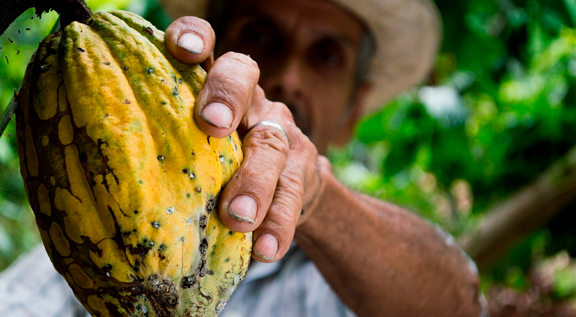
Image: Pixabay
“In relation to grinding, there is an expectation that it will continue to grow. However, due to the impacts of the pandemic on the economy and people's lives, it is still uncertain whether we can predict an exact number, but we hope to at least maintain the level of 2021”, says Anna Paula Losi, executive director of AIPC.
Along with the increase in crushing, the industries also recorded an increase in the volume of national almonds received. In 2021, the total volume was 197,654 tons, exceeding the accumulated volume in 2020, which was 174,283 tons, by 13.4%.
Receipt by state breaks record in Bahia
Bahia continues to lead national cocoa receipts, with 140,928 tons in 2021, a result above all accumulated since 2017. In the first quarter, around 9,296 tons were recorded and, in the early harvest, which covers the months of May to September, there were 94,534 tons. Receipts from Pará, the country's second largest producer, were below recent years, closing the period at 49,821 tons, a drop of 24.6% compared to 2020, when receipts were 66,133 tons. The drop in production and consequently in receipts was due to climate fluctuations, which affected the end of the main harvest and also the early harvest, which resulted in a receipt of 34,372 tons, compared to 45,279 tons in 2020. The receipt of almonds from Espírito Santo ended the year with 5,261 tons, a drop of 6% compared to 5,600 tons in 2020, while Rondônia was practically stable, with 1,584 tons.
Imports and exports
Even with the increase in the volume of national receipts, industries needed to resort to imports in order to meet the demand for derivatives from international customers. The volume acquired in other countries is of fundamental importance for processing industries to continue operating with idle capacity within the acceptable limit, ensuring the sustainability of the chain and the maintenance of plant operation. In the year to date, 59,768 tons of almonds were imported, a volume 6.6% higher than the volume imported in 2019, pre-pandemic period. In 2020, the imported volume was well below normal levels, at 35,723 tons, due to social isolation and the impacts of the pandemic, which reduced the consumption of chocolates and chocolate products around the world.
{module Form RD}
The export of derivatives in 2021 was 54,616 tons, an increase of 9.41 TP3T compared to the 49,916 tons shipped in 2020. The volume was also 7.71 TP3T higher than in 2019, when exports closed at 50,723 tons. The main destinations for Brazilian cocoa derivatives are the markets of Argentina, the United States and Chile.
Outlook for 2022
Despite the increase in the receipt of national cocoa by processing industries and the increase in grinding last year, bad weather conditions could compromise the volume delivered to industries in 2022. This is because the heavy rains that occurred in Bahia in December caused damage to many municipalities, which could affect the performance of the early harvest. Initially, the industry's expectation was that receipt would be around 180/190 thousand tons. “Now, we need to verify the real impact that the rains had not only on production, but also on the infrastructure of the regions to understand the effects”, ponders Anna Paula.
AIPC data.
By: Aline Merladete | agrolink















